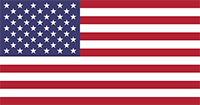Mask Fit Matters!
While the CDC is relaxing face mask guidelines for people vaccinated against COVID-19, they still have an important role in the COVID-19 pandemic and have shown their effectiveness against other infectious diseases, like the flu. Therefore, many people will continue to use them as part of everyday life for the foreseeable future.
However, even the best mask must fit well to effectively prevent airborne particles from spreading via people’s noses and mouths. One of the most common issues is the potential for gaps between the mask and the wearer’s face.
Did you know that fogging glasses are more than an inconvenience for mask wearers?
It’s actually a quick gauge for how well the mask fits. If your glasses are fogging, that means moisture (and possibly infectious disease particles) are leaking around the mask’s edges.
Whether or not you are wearing glasses, contacts, or no eyewear at all, when a mask doesn’t fit properly, it pushes air upward, onto the eyes, potentially causing the tear film — the liquid layer that coats the eyes’ surface — to evaporate more quickly. This may lead to Mask-Associated Dry Eye (MADE) leaving the eyes to feel sore, gritty, dry, and irritated.
Read on for some tips to ensure the best — and safest — fit, which will help you make the most of your mask.
Choose a mask with a thick double-wire nose bridge.

A nose bridge, the metal strip in a mask to mold to the wearer’s nose, provides a tighter seal to prevent leakage and thus, foggy glasses. The nose bridge should be molded across the bridge of the nose and to the center of the cheekbones.
Make sure you’re wearing your mask correctly.
Ear loops can not only be functional, a high quality ear loop can make a big difference when you have a mask on for extended periods of time. Make sure you look for a mask with a comfortable ear loop that fits well, without losing stretch.
If ear loops are too loose, they can be easily fixed by:
A simple twist or two of the ear loops before putting the mask on
The “knot and tuck” method:

Wear a mask fitter or brace.
Mask fitters and braces are devices that can be used over a mask to help reduce air leakage. For the firmest fit, we recommend adding one of the following devices:
Consider adding a face shield.
Face shields can be worn with a mask and offer protection from the direct transfer of respiratory particles. We like the ZShield Ultra from ZVerse, which you can buy individually or in a bundle with the Aries face mask.
Should you double-mask?
There has been so much confusion over the best way to fit your mask. Most importantly, you should always start with a mask that offers high filtration. If your mask filters properly, you can address fit with any of the methods above and not have to compromise comfort and breathability.
Internal tests by Aries showed that by adding another mask on top of a good filter mask could actually compromise the fit of the high-filtration mask by straining nose wires and ear loops. In addition, the added fabric can significantly reduce breathability. So, before you throw on that extra mask, consider all the other fit techniques that can improve a high-performance mask.
Want to know more about masks that won’t fog your glasses? Contact us today.
 100% Made in America
100% Made in America 
